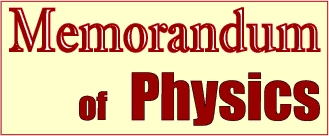Motion and Point mass
Point mass
The size, the material, the rotation, and the transformation of the object need not be considered when thinking about translation of the object.
It thinks by considering, "All mass of the object has concentrated on one point where the object is represented".
"Point that can be considered to be a concentration of all mass there on behalf of the object" is called point mass.
For instance, when force acts on the object, force is considered to be an action on Point mass.
Point mass has only mass, and doesn't have the size.
When thinking about translation, the entire object need not be considered.
If only one point where the object is represented is examined, it is enough.
The represented point is only one point. The plural doesn't exist.
However, any point cannot be freely represented.
It is only "You may consider that all mass has concentrated on the respect. " for the point to be admitted as a represented point.
The book that defines mass, "There is no size, and point with only mass" is often seen.
It is easy to cause the misunderstanding though it is appropriate as the definition.
The reason for "There is no size, and point with only mass" doesn't exist.
It is realistic if it thinks as "Represented point" like the above-mentioned.
The earth's yearly round is influenced by neither rotation nor the transformation (for instance, mountain building).
The revolution is considered that all mass of the earth has concentrated on the center of the earth (point to represent the earth).
Because the revolution is translation, you may consider the earth to be point mass.
<<PREVIOUS---NEXT>>
